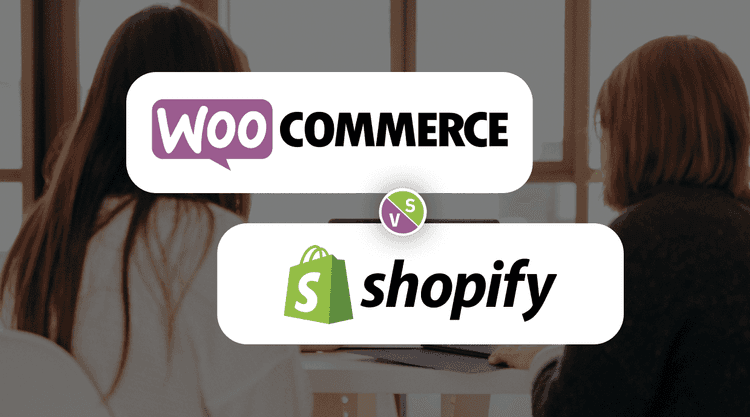WooCommerce Vs. Shopify: eCommerce Platform Migration 2024
Sector: Digital Commerce
Author: Nisarg Mehta
Date Published: 06/20/2023

Contents
WooCommerce Vs. Shopify – Let’s Compare Migration Compatibility
When it comes to running an online business, choosing the right eCommerce platform is crucial. However, you don’t always make the right choice when picking an eCommerce platform for your business.
Most eCommerce startups prioritize the cost factor when picking the eCommerce platform. However, when they scale up and need more features and integration freedom, they require a better platform.
In this article, we’ll look at Shopify and WooCommerce in terms of which one makes more sense when you want to migrate.
But before that, let’s see when it’s essential for you to migrate to a new eCommerce platform.
When Should You Decide on eCommerce Platform Migration?
Here are some common scenarios when eCommerce platform migration is necessary:
Outgrowing Current Platform
If your business has experienced significant growth and your current platform no longer meets your needs in terms of scalability, performance, or features, migrating to a more robust platform can provide the necessary infrastructure and capabilities to support your expanding business.
Limited Customization and Flexibility
If you find that your current platform restricts your ability to customize the design, functionality, or user experience of your online store, migrating to a platform that offers greater customization options can help you tailor your store to your specific requirements and brand identity.
Better User Experience and Interface
If your current platform lacks a user-friendly interface, navigation, or checkout process, migrating to a platform with a more intuitive and streamlined user experience can enhance customer satisfaction, reduce cart abandonment rates, and improve overall conversions.
Advanced Features and Functionality
If your business needs advanced features such as complex product variations, multi-language support, advanced inventory management, or integration with specific third-party tools or services, migrating to a platform that offers these features out-of-the-box or through plugins/extensions can help you meet your business requirements more effectively.
Mobile Responsiveness
If your current platform does not provide responsive designs or mobile-friendly features, migrating to a platform that prioritizes mobile optimization can ensure a seamless shopping experience for your mobile users and accommodate the increasing number of customers accessing your store via mobile devices.
Cost Considerations
If your current platform’s pricing structure, transaction fees, or add-on costs are becoming prohibitive or no longer align with your business goals, migrating to a platform with more favorable pricing options or a different fee structure can help you optimize your costs and improve profitability.
Improved Security and Compliance
If your current platform lacks robust security measures, SSL certification, or compliance with industry standards (such as PCI-DSS for payment processing), migrating to a platform that prioritizes security and compliance can safeguard your customers’ data and build trust in your brand.
So, if you fall under any of these categories, it’s time for you to migrate. Although there are dozens of eCommerce software out there, here, we’ll compare two of the most popular ones – WooCommerce and Shopify.
WooCommerce Vs. Shopify - Differences in Terms of eCommerce Platform Migration
Let’s compare them, focusing on their differences in terms of migration.
1. Data Migration
Moving crucial data from an existing platform to a new one is a critical step in the migration process. Let’s explore how WooCommerce and Shopify handle data migration.
WooCommerce
WooCommerce provides various options for migrating data from another platform. With dedicated plugins and tools like Next Cart, WP All Import, and more, you can seamlessly transfer product information, customer data, and order history.
However, it’s important to consider the compatibility of data types and potential challenges during the WooCommerce migration process.
Shopify
Unlike WooCommerce, Shopify does not provide direct access to your website’s files and database. However, Shopify offers a convenient migration tool called “Migration Pro – Store Importer.”
This tool enables users to import their data from another eCommerce platform seamlessly. It supports the migration of crucial data such as products, customers, and orders, among other important information.
Moreover, Shopify has a network of migration partners available to assist users throughout the migration process, ensuring a smooth transition to the Shopify platform.
2. Design and Theme Migration
Maintaining the look and feel of your online store is crucial during migration. Let’s see how WooCommerce and Shopify handle design and theme migration.
WooCommerce
Migrating the design and theme from another platform to WooCommerce requires careful consideration. While WooCommerce provides flexibility and customization options, compatibility issues might arise. However, WooCommerce offers pre-designed themes and templates to simplify the WooCommerce migration process. But, to be clear, it’s tedious.
Shopify
Shopify makes design and theme migration relatively seamless. With its intuitive interface and customization options, you can migrate your existing design and themes to Shopify with ease. Additionally, Shopify boasts an extensive theme store and third-party theme availability, providing ample options for customization.
3. SEO and URL Migration
Preserving search engine rankings and managing SEO during migration is crucial for maintaining online visibility. Let’s compare how WooCommerce and Shopify handle SEO and URL migration.
WooCommerce
During migration to WooCommerce, it’s important to consider SEO implications. WooCommerce offers plugins and tools to manage URL redirects, ensuring minimal disruption to your search engine rankings. Proper planning and configuration are necessary to preserve SEO during migration.
Shopify
Similarly, Shopify understands the importance of SEO during migration to Shopify as well. With built-in features and third-party tools, Shopify simplifies the process of handling URL redirects and preserving search engine rankings. This ensures that your online store maintains its visibility and organic traffic even after migration.
4. App and Integration Migration
Integrating with external services and apps is essential for enhancing the functionality of your eCommerce store. Let’s explore how WooCommerce and Shopify handle the app and integration migration.
WooCommerce
Migrating existing integrations and plugins to WooCommerce requires careful consideration. The compatibility and availability of plugins should be evaluated to ensure a smooth transition. Although challenges may arise, WooCommerce provides a wide range of plugins to broaden the functionality of your store.
Shopify
Unlike WooCommerce, Shopify offers a robust app ecosystem, making app and integration migration a breeze. With its extensive app store and available integrations, you can easily migrate your existing integrations or find suitable alternatives. This allows you to continue leveraging third-party services seamlessly.
Final Verdict
Choosing the right eCommerce platform for migration requires a thorough understanding of the migration process and capabilities of different platforms.
WooCommerce and Shopify both offer solid options, but their approaches to migration differ in various aspects.
While WooCommerce provides flexibility and customization options, Shopify simplifies migration through its intuitive interface and extensive app store.
Consider your specific migration requirements and evaluate these differences to make an informed decision for your business.
Remember, a well-executed migration sets the foundation for future success in the ever-evolving eCommerce landscape.
Latest Tech Insights!
Join our newsletter for the latest updates, tips, and trends.



